Remember the good ol’ days when search meant Google and Bing, and not much else?
In 2025, with about 13.7 billion daily searches, Google remains the number one traditional search engine, but it may not be for much longer.
Search now flows through AI tools like ChatGPT, Perplexity, and Gemini. As of mid-2025, ChatGPT nets roughly a couple of billion daily searches, is growing 5.5x faster than Google, and is projected to overtake traditional search by 2028.
So naturally, digital marketing professionals rushed to decode the new landscape with a mouthful of acronyms like GEO, AIO, and GSO. The attempt to decrypt just made it feel more encrypted.
What’s clear to us, though, is that brands still aim for the same thing: to show up where people search.
But with AI search, there are subtle shifts in which levers to lean on to get there.
So let’s break down the big way Answer Engine Optimization (AEO) is changing traditional SEO, and why I’ve come to believe that authoritative, creative, people-first digital PR can keep your ground stable, even as the tectonic plates of AI continue to slam into search.
Key Takeaways
- SEO still matters, but AEO is changing what’s most important.
- What’s especially important for AEO? Data indicates it’s brand signals.
- Digital PR earns citations and branded links that lift both SEO and AEO.
- Aim to earn coverage with publishers that AI cites again and again.
- Pair proven digital PR frameworks with AEO.
- Focus on the 10% shift.
AEO Puts Brand Front and Center
AEO is the marketer’s answer to AI’s role in search. It’s how we optimize for AI overviews and answers. We break it down more here.
There is a lot of buzz about “SEO being dead” or AEO replacing it. But the truth is that at this moment in time, SEO and AEO are both crucial for search.
Of course, there’s no avoiding the fact that AI is radically changing search, but it’s also true that the strategies and tactics we’ve been using can still move the needle. From what we’ve seen and researched, there’s about a 10% shift. Part of that new slice is a stronger focus on brand presence.
According to Ahrefs, the three content signals correlated most strongly with AI overview results, in order of importance, are:
- Branded web mentions
- Branded anchors
- Branded search volume
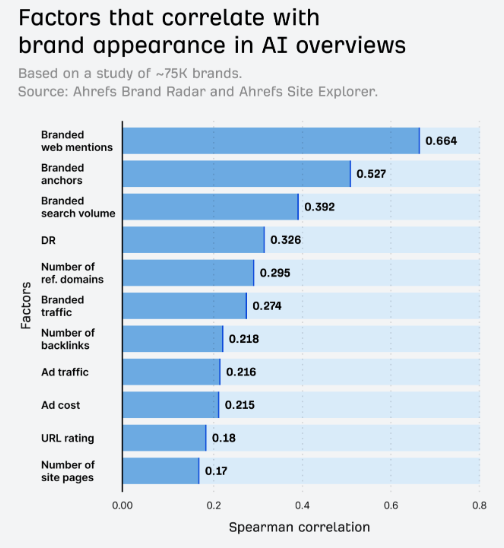
The common denominator? Brand. Whether it’s a citation in the NYT, or a Reddit thread, or the number of people Googling a brand again and again, all correlate with increased brand appearance in AI overviews.
And it’s not necessarily that backlinks are out. Both backlinks and the number of referring domains have a positive correlation.
As noted by Nick Leroy, “AI (and search) is learning who you are, how you’re talked about, and whether you’re trustworthy.” And brand mentions, backlinks, and other brand-related references are what suggest credibility to LLMs.
An analysis from AirOps of 21,311 brand mentions finds that 85% of brand mentions in AI search are from third-party sources. In other words, the data shows that AI is heavily influenced by what others say, so aligning owned content with earned coverage and recognition should compound, as the visual below shows.

The fastest way we know how to build those signals at scale is digital PR.
Digital PR Builds Brand and Boosts Search Visibility
Digital PR is a blend of SEO and PR. This type of “Content for Media Coverage” was born to cut through the noise by providing more opportunities for brands to get in front of their target audience both in the media and in Google search.
Google Trends data shows that digital PR has been trending up in 2025. The increasing interest aligns with the increasing use of generative search.
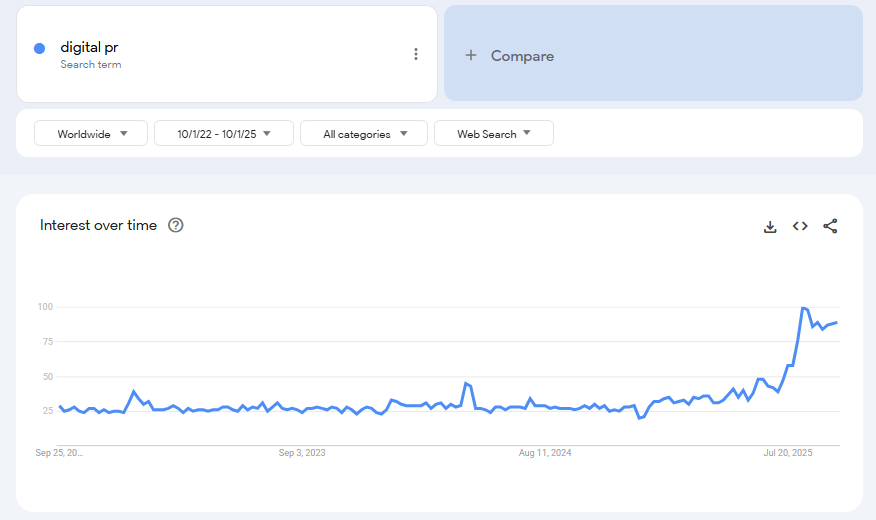
According to a 2025 survey from Buzzstream, digital PR is the most effective for first building backlinks (89.6%) and, a close second, building brand awareness (83.2%):
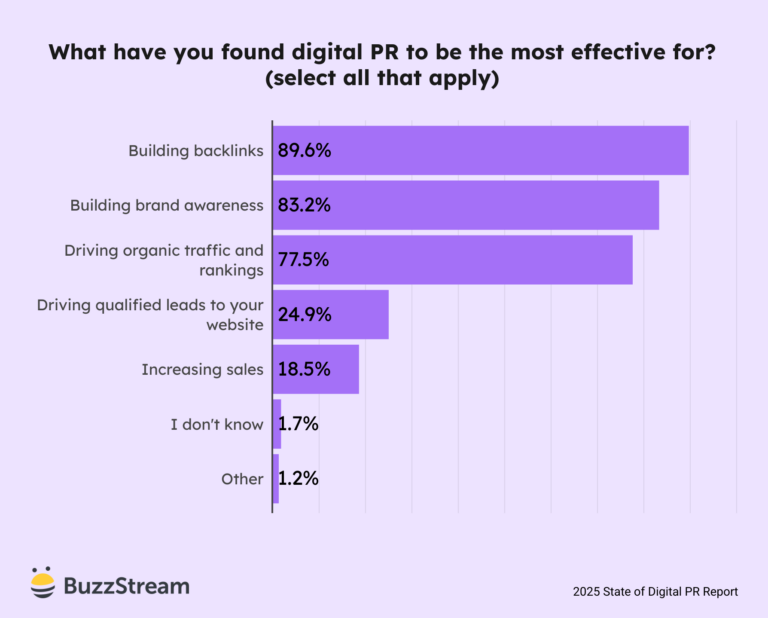
Since evidence points to AEO prizing brand mentions above all else, what better way to see results? Digital PR will helps build up brand momentum as well asboost search results for both traditional and AI search. It’s a win-win solution, serving both SEO and AEO efforts.
Redefining Digital PR Success for AEO
Backlinks used to be THE measure for digital PR success.
However, when it comes to AEO it’s all about maximizing your coverage.
From backlinks to brand mentions, and even broader metrics like social shares and Reddit comments, when trusted sources cite your work, AI search engines are more likely to mention your brand.
But what do you do when the machine is always learning and changing?
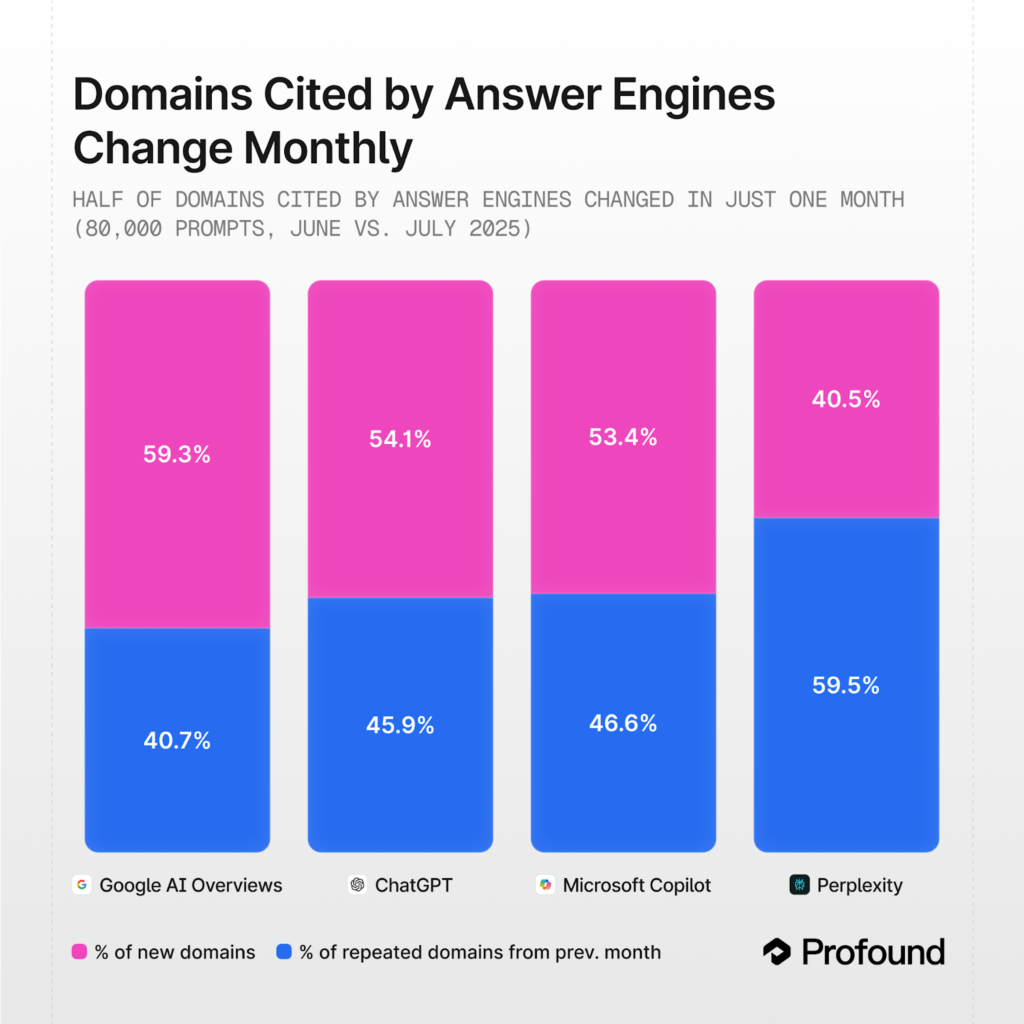
Recent data from Profound, a leader in AI optimization, shows that in just a single month, 40-60% of citations will be completely different across various platforms. Over longer periods of time, that percentage increases.
They state that maintaining citations is unlikely because AI engines are constantly adapting to an ever-changing information landscape.
Treat that volatility like the news cycle. It’s not a reason to quit, but a reason to keep publishing more content to reach your audience in new ways. Headlines change, editors rotate, the cycle keeps moving. Apply the same mindset to AI citations.
Getting your name out there and everywhere will ensure you are set up for the long game of AI search. Broad, credible coverage across trusted outlets, communities, and data hubs, will provide your brand staying power through algorithm shifts. Expect that compounding lift to show up in roughly 12 to 18 months.
Here’s what you can do:
- Track which publications and domains answer engines trust most. Otherwise, your Digital PR efforts as a support for AI search optimization will fall flat. Profound notes that ChatGPT especially likes outlets like Business Insider and TechRadar.
- Find “Hidden Influencers.” Start with your topic, scan related questions in AI search, and spot the unexpected brands and publishers earning the most citations.
- Constantly monitor. Keep monitoring. The landscape shifts, preferred sources will change, so your outreach and strategy should too.
- Design campaigns around frameworks that win citations. Profound advises perusing AI results for answers related to your topic to help inform how you structure the content. Is a top 10 report cited most? Is a data study? A survey? Knowing this will help you build the best piece of content to encourage a direct citation from AI search engines.
3 Examples of Digital PR Campaigns Showing Up in AI Search
Do digital PR campaigns actually influence AI search answers? They do.
Using ChatGPT, we asked three different queries and examined the top sources cited by the search engines. Here’s what we found.
1. Which cities in California are building the most homes?
In digital PR we often see city studies focusing on real estate perform well. But do they inform AI search answers?
Top sources:
- Local Media: LAist, Axios, and Urbanize LA
- .gov’s: California Housing Dept. and Census.gov
- Digital PR: Construction Coverage’s U.S. Cities Building the Most Homes
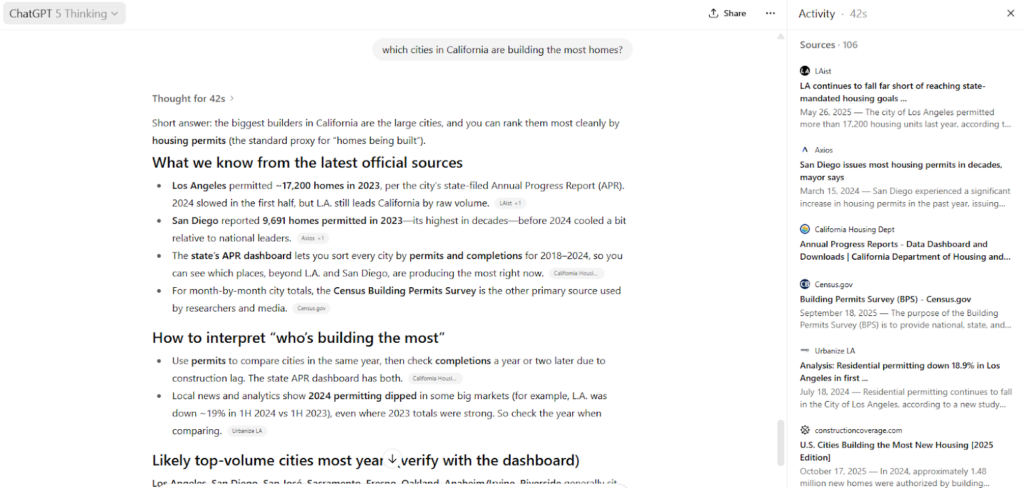
What this tells us? ChatGPT rewards localized data studies, specifically on real estate. Aim outreach at local and state outlets.
2. Which cities are best for coffee fanatics?
City studies highlighting the best of for different lifestyles, hobbies, or preferences are another type of digital PR campaign that historically earns media attention. Does ChatGPT take these campaigns into account?
- National Media: Food & Wine, The Manual,
- Aggregators: Yahoo, BLK Alerts
- Travel Media: Rovology
- Local Media: ABC15
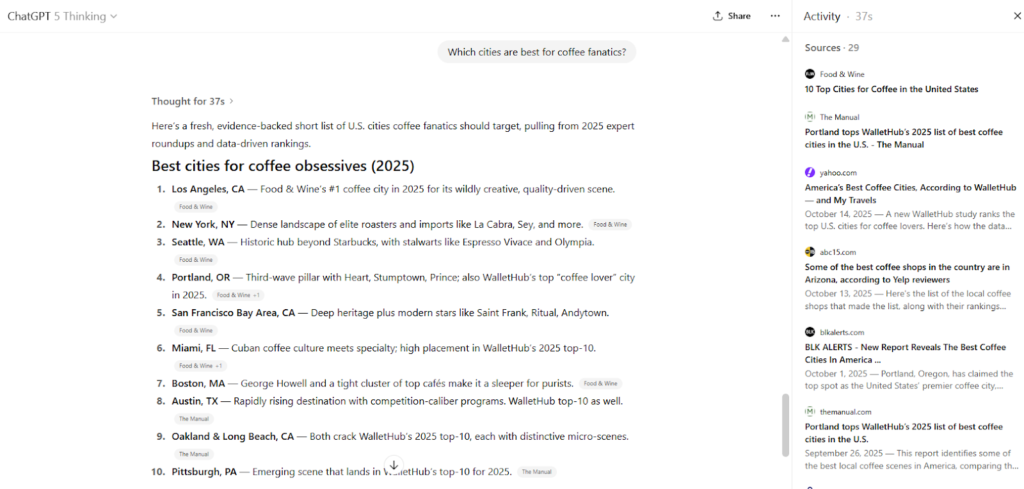
What this tells us? Listicles like one from Food & Wine and coverage of digital PR campaigns by Wallethub and Yelp get cited. The Wallethub study may show up above the fold, but it is the data featured in outlets on the source list. Aim outreach to both national lifestyle and local outlets.
3. Are there any 15-minute cities in America?
- Official city planning: City of Cleveland, Seattle (OPCD), Denver (Blueprint Denver)
- Planning nonprofit: SPUR, LGIU
- National media: AP News
- Digital PR: moveBuddha’s Where are 15 Minute Cities Most Viable in the US?
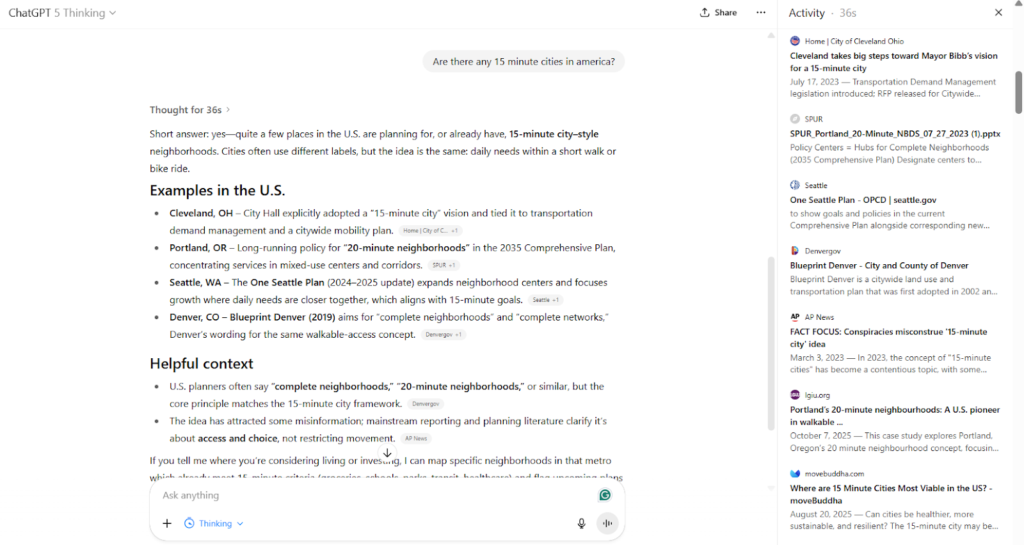
What this tells us? High-authority, city planning sources dominate. Being the source is what matters for this type of niche topic. A study with a clear methodology and strong data can stand alongside respected .gov’s and .org’s, as moveBuddha’s does here.
Which AEO tactics specifically align with digital PR campaigns?
Using formats AI already pulls into answers is how you win citations.
Here are digital PR frameworks that partner well with AEO strategy.
City or State Rankings and Indexes
What is it? A data study resulting in a list of cities or states that are ranked, often across several scored factors.
Why it works for AEO? It creates proprietary facts that answer engines can easily quote.
AEO upgrade: Give each featured city or state a question and answer block. Ex: Why does {state} rank #1 best for retirement?
Example: The master of this format, Wallethub, goes an extra step and combines the Q & A format with expert commentary, like in their report on the Best & Worst Places to Retire.

Annual Report or Recurring Data Study
What is it? An analysis of a single topic that is measured on a regular basis.
Why it works for AEO? It not only creates easy to quote facts, but it supplies regularly refreshed data and comparable time series that AI search engines like.
AEO upgrade: Include clearly labled html tables, time stamps and always summarize key findings
Proprietary data study
What is it? An analysis of data collected by a brand via calculators, webpage search tools, or user surveys.
Why it works for AEO? The best of the best, when a brand owns their own data they aren’t just touting data, they are the data. Any time that it is mentioned, the brand is too.
AEO upgrade: Make it ultra clear that the data + source is owned by the {brand} and tie it into outreach so that the findings are always cited along with the {brand} name. Offer CSV downloads of the data, tables, and clear methodology to send additional signals that answer engines like.
Example: Wiz.io is an expert at brand marketing, and packaged up this proprietary data study so that it’s not just friendly for audiences and media, but for AI search engines too. They present their findings as fact, delivered in an easily digestible block of text. They have a link to download the report and links for sharing their findings, too.
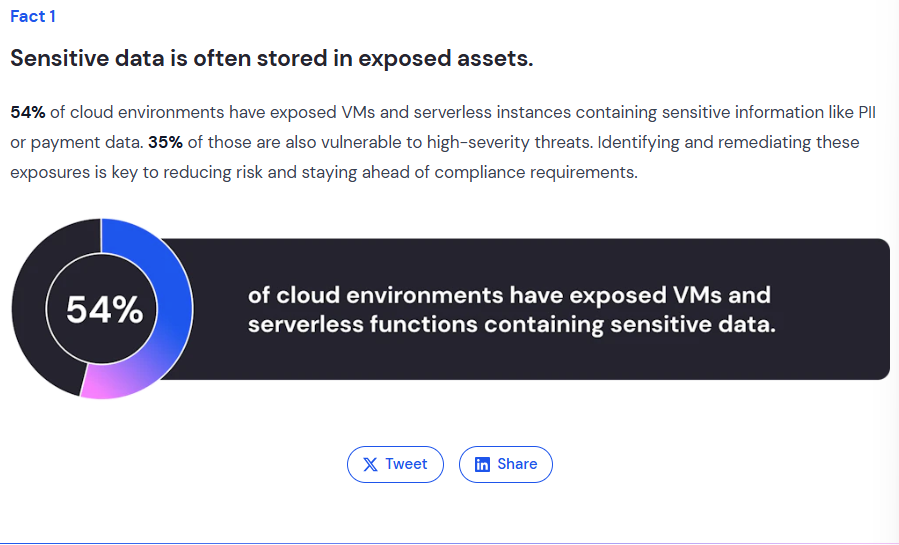
Surveys
What is it? A collection of responses whether national polls or segmented samples, including on-site questionnaires (like post-purchase polls).
Why it works for AEO? Surveys serve brands like proprietary data, the brand because the source of the survey dataset and answer engines also reward new stats and fresh data.
AEO upgrade: Structure the content like an FAQ. Present the questions in the H2 and the findings immediately following in a short answer-first block of text.
Live cost, price, or data tracker
What is it? A continuously updated dataset.
Why it works for AEO? The data is always fresh. The newest answers often provide the best answers to searches, so this type of content is gold.
AEO upgrade: Beyond including html tables, FAQs, and a plain-English methodology, make sure to talk about your data in the same way across your website, media, and social to build consensus. This reinforces trust, and ultimately signals to answer engines that the data is factual and worth citing.
Example: AAA live gas prices map includes an interactive map, html table, time stamp, and names their data average the “AAA National Average” to encourage citations that include their brand name.

Stats page
What is it? A collection of all the important numbers on a given topic, that aligns with the brand.
Why it works for AEO? It concentrates information in one place and combines data with context.
AEO upgrade: Add a summary sentence in natural language to each stat to provide additional perspective. Even better, add in expert commentary or a “what changed” explainer to provide more unique insights to answer engines.
Example: Exploding Topics is the best at curating stat pages that are easy to peruse, beautifully edited, and structured with AEO in mind. Each stat is clearly cited and their team weaves in “original research” to boost their own authority on the topics they cover.


The 10% Shift You Can’t Ignore: How AEO Changes the Game for Digital PR
So, what is the difference between AEO and SEO? The way we search has changed; we are moving from isolated queries to conversations. In practice, about 90% of what works still works. The change lives in the other 10%.
Most of the content rules that have always mattered still matter. Create people-first content. Serve the user before you serve the bot.
Recently, Google’s VP of Search shared what is and is not driving results in AI Overviews. What’s not is things that aren’t meaningful or original. Their aim is to up-weight “more and more content specifically from someone who really went in and brought their perspective or brought their expertise, put real time and craft into the work.”
Here are the new non-negotiables for every campaign:
- Liftable answers: Write direct answers either at the top of each section or to clearly
- state stats so it’s easy for AI to read and quote. Key takeaways are a great place to do this and after every H2.
- E-E-A-T: Experience, Expertise, Authority, and Trustworthiness. Use one-of-a-kind examples, expert commentary, case studies, editorial tidbits, and tips only you can share within pieces that emphasize brand.
- Brand + Topic: For coverage, request links anchored with the same branded phrasing. Exact text repeated across platforms builds consensus.
- Keep it fresh: AI likes newness. Always include the latest timestamp to showcase how up-to-date your data is. Go one step further and ensure schema markup with datePublished and dateModified are updated too.
- Own the data: I repeat. Own. The. Data. Share the data. Tell everyone about your data. But tell everyone it is YOUR data. Why? Because anyone who talks about it, will have to talk about you.
- Show the data: Clean it up. Pop it in an html table. Share a CSV download. Include timestamp. Compare to past data. Repeat.
- Question & Answer: Use question-style headings to mirror user queries and provide the direct answer right below. FAQ or Q&A blocks are now critical in content, they mirror how people ask questions in real life and are how answer engines find information fastest. Don’t forget the schema markup for FAQPage when relevant.
How do you measure that, especially with ever-evolving algorithms and ever-learning language models?
Start by tracking brand presence. Companies like Profound and Ahrefs provide tools to monitor citations, mentions, and visibility across answer engines.
Since the landscape is new, measure more frequently. Track. Learn. Adjust. Repeat.
Conclusion:
The digital landscape is shifting toward AI-powered answers.
As AI grows, the need for brands to be more intentional and human grows.
A proven way to demonstrate that is through digital PR. Producing data studies that bridge the human story with the evidence helps brands tell their story, reliably.
They don’t need to be viral. They never really did. What matters is a steady run of answer-first, data-driven pieces that earn coverage from the right publishers. Build the library, and answer engines will draw from it when people ask real questions.
And more and more people are asking every day. So that’s good news.
But, make sure the digital PR you produce reinforces your part in a conversational world. Get out there and start sparking more conversations.
aeodigital pr



Leave a Reply